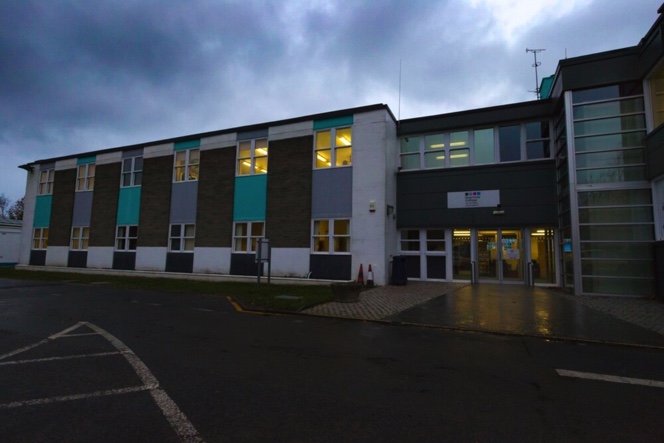The Guernsey Institute: Guernsey's New Provider of Further and Higher Education
Introduction
In 2019 there were three on-island providers for further and higher education: the Guernsey College of Further Education (GCFE), the GTA University Centre (GTA UC), and the Institute for Health & Social Care Studies (IHSCS).In January 2018, the States directed the Committee for Education, Sport & Culture to create a single organisation which will deliver full-time and part-time technical, professional and vocational studies for the Bailiwick of Guernsey, by integrating the existing three providers. It is also the Committee’s intention to partner with a UK university to obtain University College status. Peter Marsh Consulting Limited was commissioned to provide a report on the further and higher estate planning.
Most of the Estates Strategies that we write at PMc remain confidential documents but in this case our report was shared openly with Elected Members and the public. The full report can be downloaded from the link below (please note: due to size restrictions it has been separated into two main documents with 3 appendices.) https://www.gov.gg/fhtransformation
Overview
As part of the work taking place to integrate the three providers of further and higher education in Guernsey, Peter Marsh Consulting (PMc) was commissioned to consider the space requirements of the future organisation. Previously PMc carried out an analysis of the minimum education space requirements for the two extensions at Les Beaucamps High School and St Sampson High School. PMc have significant expertise in working with further and higher education organisations to develop space planning requirements and manage the delivery of further education building projects.
1.0 Condition and functionality assessment
Whilst most areas are operational, the College of Further Education facilities are ‘some of the least fit for purpose, most dispersed and uninspiring FE spaces that we have seen in the FE sector’. Observations of the Institute of Health and Social Care Studies (TI) and the GTA show a much higher quality of provision, providing the minimum baseline standard for any new build.
2.0 Space availability and space requirements
The current college data ‘suggests that the College has twice as much teaching space as may be theoretically required’. Current levels of utilisation are low. The curriculum planning for the Guernsey Institute appears well suited to the future new organisation; it does not assume that current plans should form the basis of actual recruitment and instead it builds in a modest amount of growth over and above the existing amount of learner activity.
PMc recommends adopting space utilisation targets that would see a substantial improvement in the use of space; whilst the targets proposed are marginally lower than those sometimes adopted for English new builds, they remain at the higher end of utilisation targets achieved in English colleges. Importantly, the lower levels of target utilisation proposed for workshop activities reflects the smaller cohorts anticipated for specialist activities; these would more likely to be rationalised across providers in an English setting, thus allowing for better utilisation than can be realistically achieved in Guernsey.
If the new Institute is located on the Les Ozouets site (LOC), a total area of just under 10,400 m2 is deemed appropriate, allowing for all of the required teaching spaces across the three strands of the existing institutions. This area has been arrived at after taking into account the fact that the Performing Arts spaces may be around 1,900 m2 larger than is strictly needed for curriculum purposes, and after having made modest adjustments to account for some of the specialist needs of the existing GTA and the Institute for Health and Social Care. PMc recommends a new build requirement of 8,173 m2 if the Institute is based at LOC and around 8,400 m2 if it built elsewhere. This is substantially lower than the c14,000 m2 recommended in earlier studies.
Potential additional requirements of other services currently based on the College sites were also considered. The Youth Commission requires c.600 m2.Their requirement for the shared use of a sports hall for use (which is not required in the Institute) means that an alternative location e.g. co-located with a school, on the existing grammar school site or at Beau Séjour, is preferable. The Music Service requires circa 370 m2 of discrete headquarters, storage and practice space. They currently access c550 m2 of space at the Performing Arts Centre (PAC) on a Saturday morning and use around 660 m2 of space at LOC and the grammar school at the same time; whether the HQ space and sharing of 660 m2 of other space are best located with the Institute or at the Les Beaucamps site should be subject to further evidence-based evaluation at the next stage. Careers and Student Finance – it is recommended that circa 90 m2 be included within the new build requirements of the Institute given its close links with education and careers.
3.0 Location
A range of options has been evaluated and LOC scored higher than all the others because of the benefits of co-locating with the Performing Arts Centre and the size of the site, which lends itself to being developed in a single phase. The site also provides further capacity for a community hub or an international university to be added at a later stage.
4.0 Design Brief
An RIBA 0 stage brief has been developed as follows:
(1) Professional and Technical Training Centre (working title only) c6,217 m2.This would be the main new building – probably a three-storey building with central facilities such as café, library, and social area together with a range of general purpose classrooms and art, media and IT studios plus spaces for health, hair/beauty and other specialist spaces that do not require high volume spaces. We envisage a discrete floor (or other zone) within the building for higher level and professional programmes, with dedicated conference and refreshment facilities to which access could be controlled by swipe-card. There would be a shared reception plus a careers, advice and guidance service.
(2) Performing Arts Centre c2,200 m2.The existing space would become part of the Guernsey Institute.There are options to design (1) in such a way as to extend the welcoming reception of the Performing Arts building into the new Professional andTechnicalTraining Centre.
(3) New Vocational Workshop Buildings c2,063 m2. These activities require larger volume spaces which will allow for a simple steel frame design to be adopted. Activities such as construction, motor vehicle and mechanical engineering could be housed in this part of the campus.
5.0 Programme and Phasing
It should be possible to build both elements of the new buildings required to deliver the Guernsey Institute in a single phase of works. An element of demolition and decant of both the Music Service and theYouth Commission will be required on the LOC site to free up space for development. A construction management plan will be required to ensure the safe and effective continued occupancy of existing PAC and college operations during the build phase. After allowing for similar timescales for design, planning and build phases, an opening date of September 2023 is considered deliverable.
6.0 Costs
Based on an allowance of £4,000 per square metre and a new build area of 8,200 m2 for the baseline institute, plus 90 m2 for Careers and Finance, there is a budget cost of £33.16m.With the Music Service on the same site and an extra allowance for their core area of 370 m2 plus 25% circulation space this might require an additional budget cost of around £1.85m. Taken together this suggests a new build budget allowance of £33mto £35m at today’s prices. Once the need to fund decant costs (including for the Music Service and the Youth Commission); and, allowances for demolition, additional external works, programme risk, contingency and inflation are provided, a total capital allocation in the order of £40 – £45m may be considered reasonable.Based on UK benchmark data, each square metre of education space costs £80-£100 in estates spend per year. Reducing the area from 16,725 m2 to 10,480 m2 gives a reduction of 6,245 m2, potentially saving circa £500,000- £625,000 in running costs per year1 . N.B. this saving excludes the substantial costs of major repair work to the fabric of existing buildings which will also be required in the next 5 to 20 years under a do-nothing scenario.



